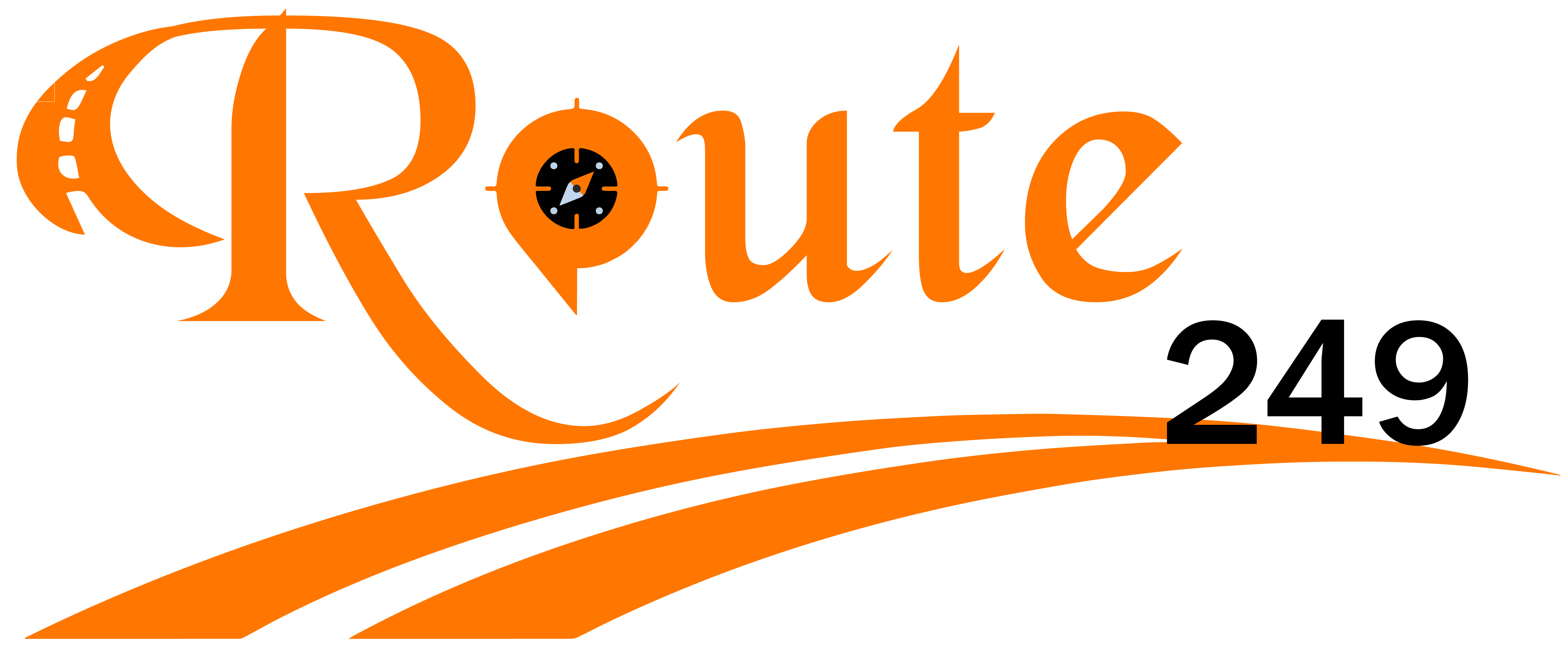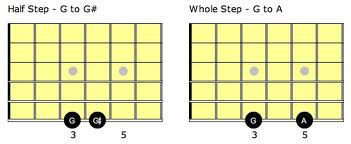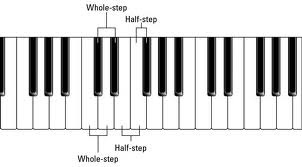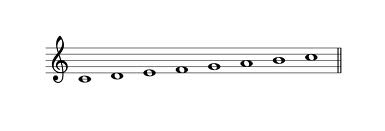Lesson 7
Scales
The Major Scale:
A scale is a set sequence of steps in ascending or descending order. Usually within one octave. You could make up your own scale, but most scales that are possible have already been named and you can use those for now. One common scale is the Major Scale. The Major Scale uses the steps as follows: Whole step, Whole step, Half step, Whole step, Whole step, Whole step, Half step. In the picture above you can see what a whole and half step is on a piano (or keyboard), and on a guitar (or bass). Now, because I already know the answer, I am going to choose the Key of “C” for our first example. It’s not cheating, I just know which one is better to start out on.
So if we write out an octave of notes from “C” to “C”, it would look like this:
C C# D D# E F F# G G# A A# B C
As you may recall from Lesson 6 (or the examples at the top of the page), a half step is from one note to the next and a whole step is two of these notes. So let’s start with “C” because that is the key that we are making. A whole step from C is “D”; another whole step is “E”; another half step is “F”; another whole step is “G”; another whole step is “A”; another whole step is “B”; and another half step is “C” again, but one octave higher. So to put them all together, we have C, D, E, F, G, A, B, & C. As you may have noticed, there are no sharps or flats in the key of C Major.
Here is an example of C Major on a musical staff and on the piano keys:
Notice that the Key of “C” on the piano uses only the white keys. That’s something to remember.
Now let’s look at another key. This time I want to use the key of “G”. If you span one octave from G to G it looks like this:
G G# A A# B C C# D D# E F F# G
If we use the same sequence (whole, whole, half, whole, whole, whole, half), we will start with “G”, two half steps is “A”, two half steps is “B”, a half step is “C”, two half steps is “D”, two more half steps is “E”, two more half steps is “F#”, and the last half step is “G” again. To put it all together you have G, A, B, C, D, E, F#, and G. There is one sharp in the key of G, and that sharp is F#.
Now let’s look at the key of “Bb” Major. Since it is a flatted scale, there will be no sharps in it. If there is anything it will be a flat or nothing. So, let’s look at the sequence.
Bb B C Db D Eb E F Gb G Ab A Bb
Bb, whole is C, whole is D, half is Eb, whole is F, whole is G, whole is A, and half is Bb. So the scale of Bb Major has two flats, and its notes are Bb, C, D, Eb, F, G, A, and Bb.
Armed with this information you can build any Major Scale, just follow the formula of Whole, Whole, half, Whole, Whole, Whole, half. It will always start and end on the same note and there will be eight notes in the scale (hence the word OCTAVE). You should practice this a few times till it becomes easy. Below are a few more examples, but you can figure them out on your own now. You don’t need me. You know how to do it yourself now.
This concludes Lesson 7. I hope you found it to be informative. You should review it and know it. Then go on to Lesson 8. I hope that you understand everything alright. If you have any questions, feel free to ask and I will try to explain it better.
Take Care,
mark













